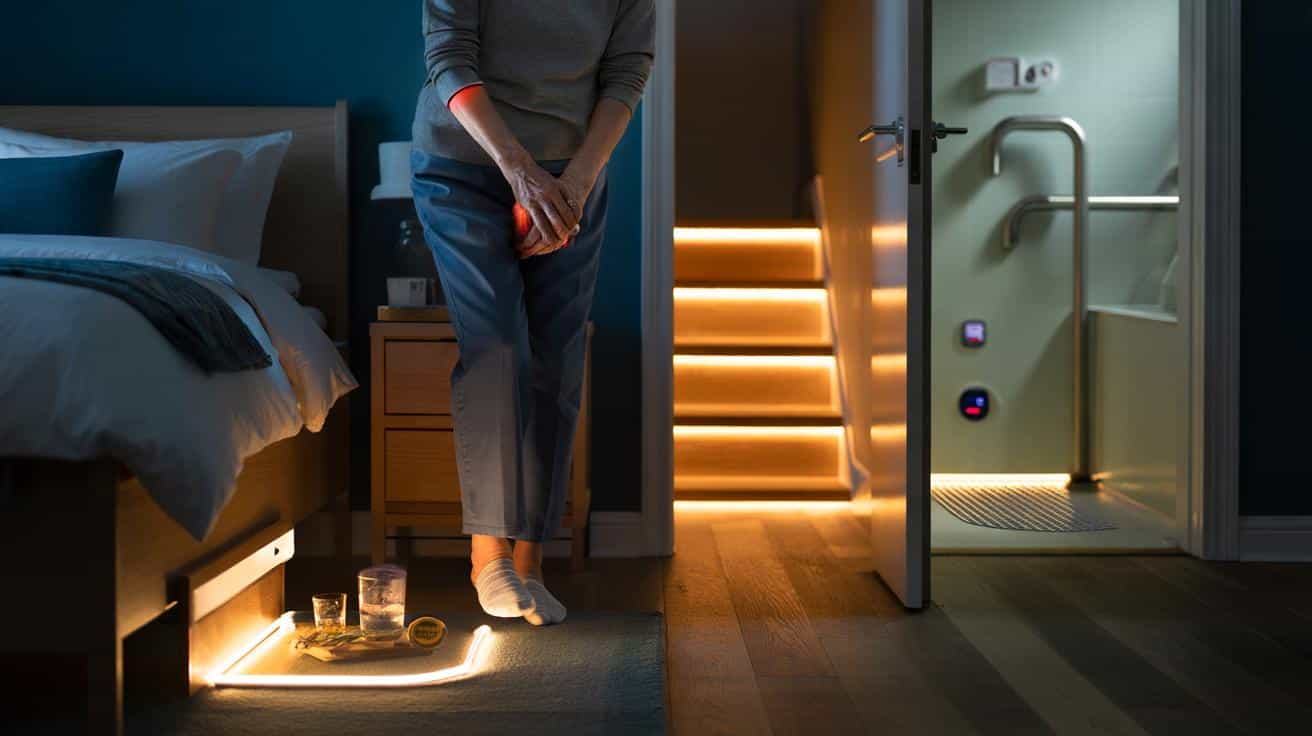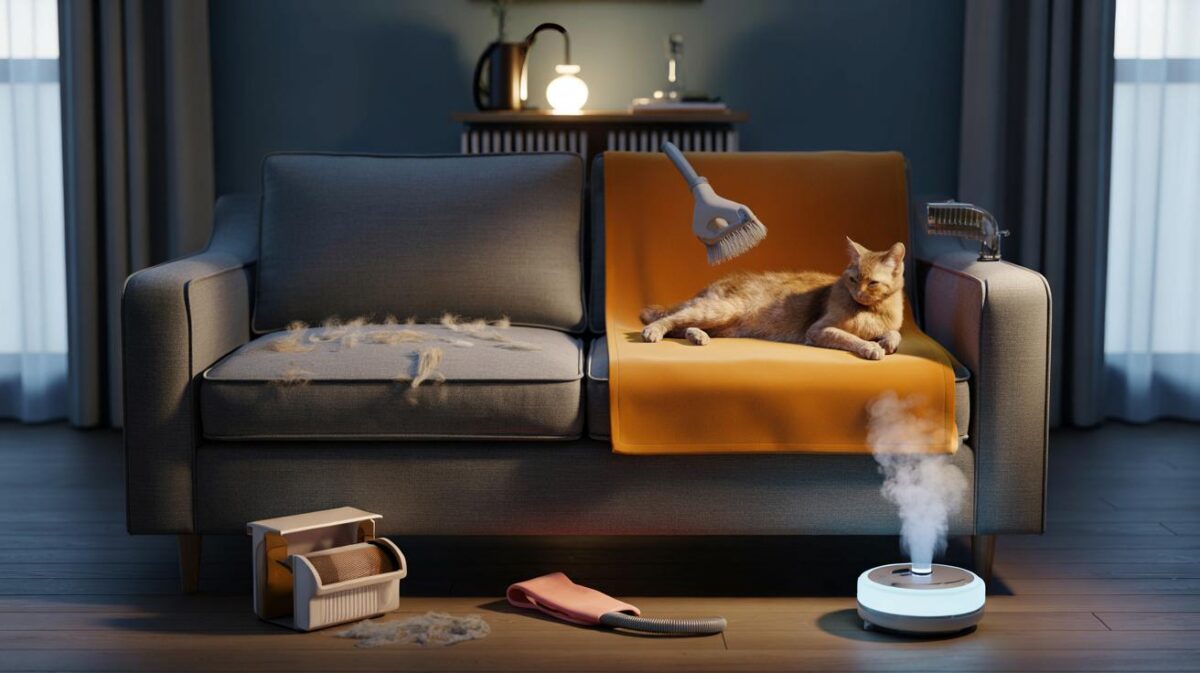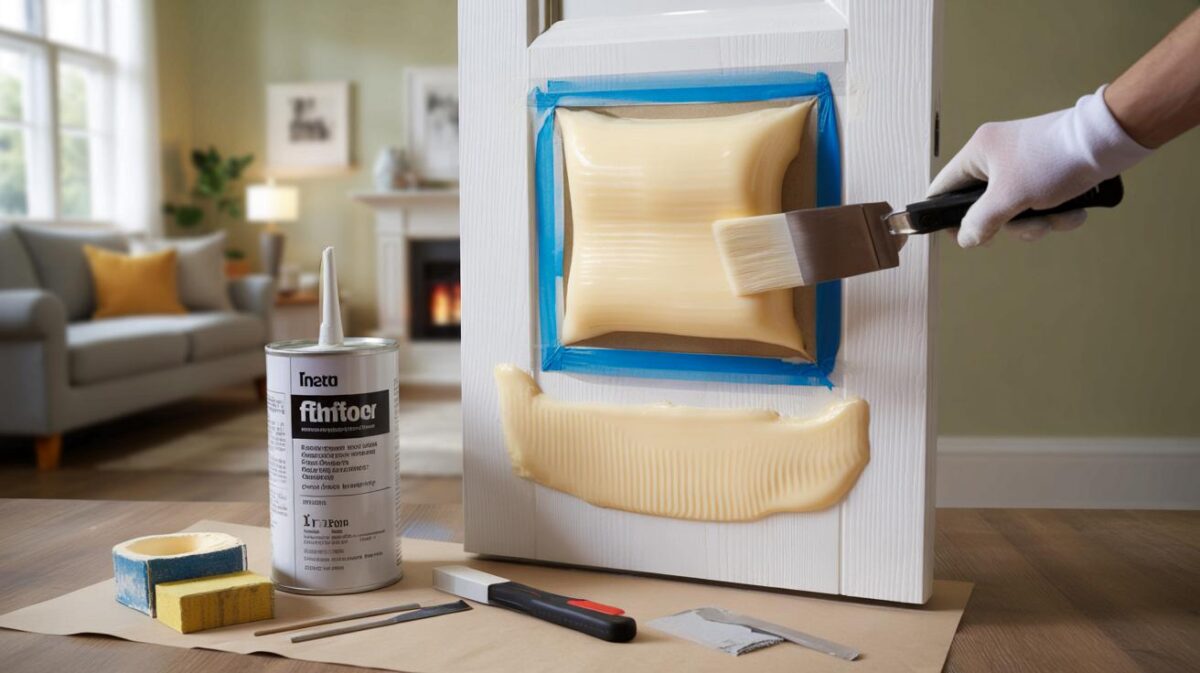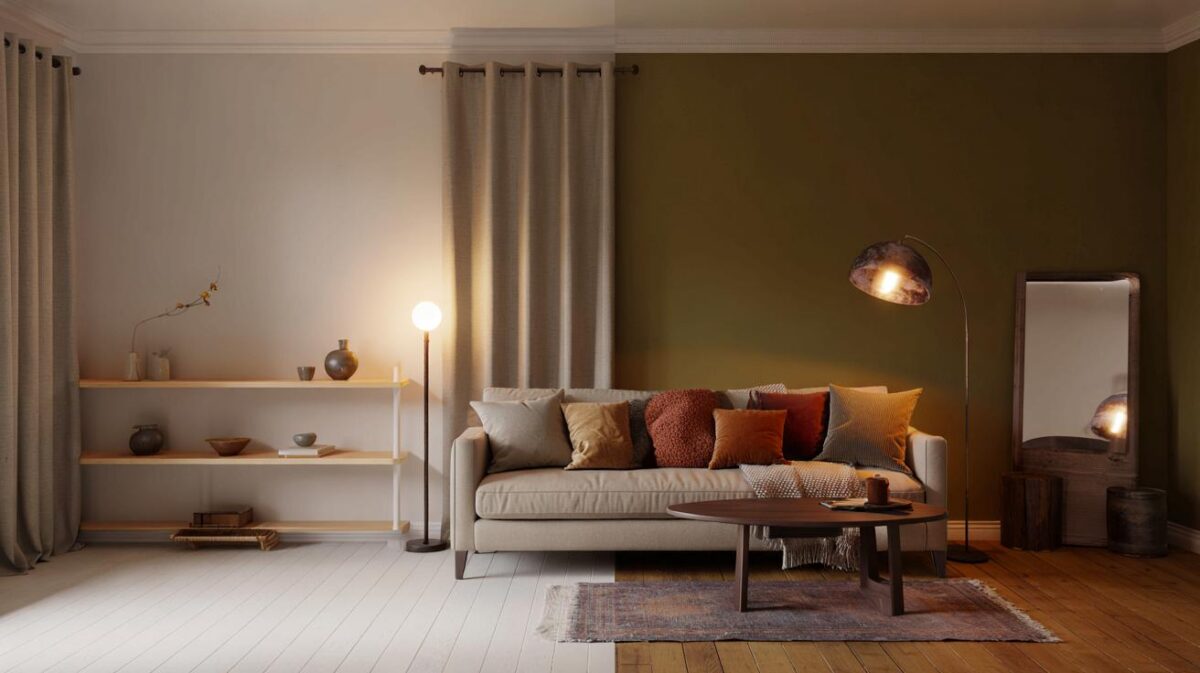Across Britain, families face the same after-dark question: how do you keep an older relative moving safely without waking the entire street? A new wave of anticipatory lighting promises to guide each step before it happens, cutting risk while keeping pride and routine intact.
The night-time hazard that catches families out
Falls don’t wait for daylight. Corridors turn into obstacle courses. Switches sit too far from bed. Eyes strain in low contrast. Sleep fogs quick decisions. A stumble in the first three metres often sets the tone for the night.
GPs and carers describe a pattern. People wake, reach for the loo, and navigate long shadows. A misjudged edge, a forgotten shoe, or a missed step sends them down. Loved ones worry. The person becomes cautious. Mobility shrinks. Independence erodes.
Anticipatory lighting that thinks ahead
Anticipatory lighting flips the script. Instead of waiting for a finger on a switch, the system senses movement and raises light softly where it matters. Light Assist, cited by homecare professionals in Europe, focuses on corridors, bedsides and stair starts. It aims to give just enough warm light, exactly when a foot moves.
Smart sensors wake a warm pathway before the first step, guiding gait and protecting confidence without jolting the eyes.
How it works at home
Discrete sensors sit under the bed, near door frames and at the top and bottom of stairs. When a person swings their feet to the floor or enters a threshold, the system fades up in seconds. The glow follows the route, then gently fades after the person returns to bed.
- Warm colour temperature to protect night vision and reduce sleep disruption.
- Gradual fade-up to prevent glare and maintain balance.
- Low-level strips to mark edges and thresholds without lighting the whole room.
- Battery backup modules to keep the path alive during outages.
- Quiet sensors with no cameras to preserve privacy.
Most homes don’t need rewiring. Adhesive LED strips tuck along skirting. A small hub coordinates sensors. Some kits talk to existing smart speakers, but they can run standalone for simplicity.
Autonomy and dignity for older people
Good lighting does more than prevent a tumble. It keeps habits intact. People rise at usual times. They find the bathroom unaided. They avoid calling for help in the small hours. That matters for dignity. It also matters for continence, hydration and sleep quality the next day.
Every illuminated step preserves a slice of independence, which is often the first casualty after a fall.
Families report fewer panicked calls. Carers find less disruption to night rounds. Anxiety eases because the home itself lends a steady hand. The person remains the decision-maker. The technology sits in the background, almost invisible.
Stairs, bathrooms and the tricky bits
Not all routes are equal. Stairs carry the highest consequence. Bathrooms carry slippery surfaces. Anticipatory lighting helps both, but some homes need a second line of defence.
When a stairlift makes sense
If fatigue, joint pain or dizziness already limits stair use, a stairlift can remove the riskiest climbs. Pair it with guided step lights and sensors at landings. Providers such as TK Home Solutions supply lifts with soft-start motors and safety edges, while installers add lighting that activates before the chair moves. The result feels coordinated rather than bolted-on.
Bathrooms benefit from floor-level guidance. Under-vanity strips keep reflections low. A dim light under a grab rail helps orientation without blowing out pupils. Door sensors trigger a soft glow, then stand down once the person returns to bed.
What to ask before you buy
- Where are the first and last steps on each night route?
- How quickly should the light rise to avoid a startle?
- Can the kit run without Wi‑Fi if the router fails?
- Does the system default to safe lighting after a power cut?
- Who replaces batteries and how often?
- Can you adjust brightness season by season?
Practical lighting ranges many installers use
These ranges help you brief an installer. They keep light low enough for sleep yet strong enough for safe foot placement.
| Area | Typical trigger | Practical light level |
|---|---|---|
| Bedside | Feet hit floor within 0.5–1 m of the bed | 100–200 lumens, warm white |
| Corridor | Motion at doorway or mid‑corridor | 200–300 lumens with edge markers |
| Stairs | Sensors at top and bottom landings | 300–500 lumens plus step highlighting |
| Bathroom | Door opens between 22:00 and 06:00 | 100–150 lumens, diffused |
Installation and follow-up without fuss
Many families fit starter kits in an afternoon. They stick strips where toes land, keep hubs near sockets, and set fade timers during dusk. Where stairs or complex layouts raise stakes, trained installers map routes, test sensor angles and label dimmer settings for relatives.
Companies with a home-access focus, including TK Home Solutions, bundle aftercare. They schedule annual checks, update firmware, and swap tired batteries. That service matters when the person lives alone or when children live far away. A reliable schedule beats last‑minute scrambles.
What this means for you and your budget
Sticker prices vary, but think in daily value. If a setup cost spread across three years works out near the price of a coffee each day, the return sits in fewer scares, steadier sleep and preserved confidence. Ask suppliers to break costs into clear parts: kit, installation, and maintenance. You get a cleaner view of trade‑offs and can phase upgrades room by room.
Track benefits you can feel. Count undisturbed nights. Note how many times a week the person walks the full route again. Record whether morning stiffness eases when sleep improves. These small numbers build a case for the spend better than glossy leaflets.
Key terms that help when you speak to providers
- PIR sensor: detects movement by sensing changes in infrared from warm bodies.
- Lux: measures light on a surface; aim low for night navigation to protect melatonin.
- CRI: colour rendering index; higher values help spot edges and spills accurately.
- Fade curve: the shape of the ramp from dark to light; gentle curves feel calmer.
Try a five‑minute “walk test” tonight
Before buying anything, do a dry run. Set your home to night mode. Walk the route from bed to bathroom and to the front door. Keep lights off and carry a notepad. Where did you hesitate? Where did your foot search for an edge? Mark those spots. That map becomes your install plan.
A simple layout that works in many semis
Place under‑bed strips on both sides. Put a sensor by the bedroom door frame. Run a low strip along the skirting to the bathroom. Highlight stair nosings with short markers on the first and last three steps. Add a slow fade to reduce startle. Keep wall switches live for visitors who prefer manual control.
Risks to avoid and gains you can stack
Too much light can dazzle a sleepy eye and raise blood pressure. Keep tones warm and levels modest. Tape down cables during trials to remove trip points. Test footwear on the new glow to avoid glossy soles slipping on highlighted edges.
Stack gains by pairing lights with grab rails, non‑slip mats and, where needed, a stairlift. Add a simple daily check: one button confirms the system ran overnight. Small routines keep the promise of anticipatory safety alive, one step at a time.








